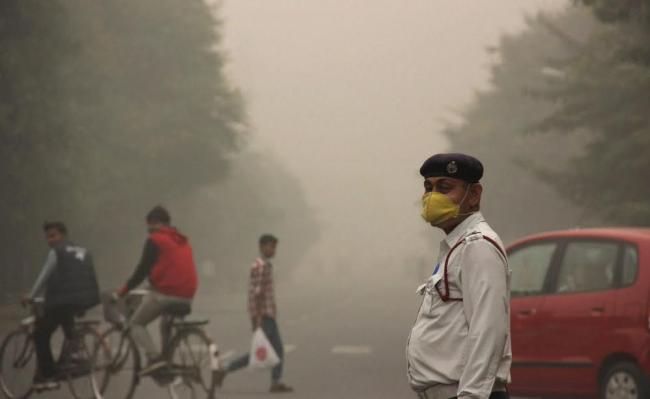
Those scented products you love? NOAA study finds they can cause air pollution
Washington, Feb 16 (IBNS): Emissions from volatile chemical products like perfumes, paints and other scented consumer items now rival vehicles as a pollution source in greater Los Angeles, according to a surprising new NOAA-led study.
Even though 15 times more petroleum is consumed as fuel than is used as ingredients in industrial and consumer products, the amount of chemical vapors emitted to the atmosphere in scented products is roughly the same, said lead author Brian McDonald, a CIRESoffsite link scientist working at NOAA.
A paper presenting these study findings was published today inScience.offsite link
The chemical vapors, known as volatile organic compounds or VOCs, react with sunlight to form ozone pollution, and, as this study finds, also react with other chemicals in the atmosphere to form fine particulates in the air.
“As the transportation sector gets cleaner, these other sources of VOCs become more and more important,” McDonald said. “A lot of stuff we use in our everyday lives can impact air pollution.”
Pollution sources then, and now
Since adoption of the Clean Air Act in 1970, air quality programs have focused on controlling transportation-related pollution emitted by everything from cars and trucks to oil and gas refineries. But McDonald and his colleagues couldn’t reconcile atmospheric measurements made over Los Angeles in 2010 with estimates of transportation emissions. So, they reassessed urban pollution sources by cataloging chemical production statistics, evaluating indoor air quality measurements made by others and then determining if the new information filled the gap.
All emissions are not created equal
The disproportionate air-quality impact of chemical products is because of a fundamental difference between those products and fuels, said NOAA atmospheric scientist Jessica Gilman, a co-author of the new paper.
Fuel systems minimize the loss of gasoline to evaporation in order to to maximize energy generated by combustion, she said. But common products like paints and perfumes are literally engineered to evaporate.
“Perfume and other scented products are designed so that you or your neighbor can enjoy the aroma,” Gilman said. “You don't do this with gasoline.”
A pollution source hiding in plain smell?
Gilman added that researchers studying the problem ended up taking a close look at things they once took for granted. “Some of my colleagues at NOAA literally spent days watching paint dry,” said said. “We learned a lot.”
While the focus of this study was Los Angeles, the authors believe the results are applicable to all major urban centers.
“We hope this study spurs collaboration between atmospheric scientists, chemical engineers and public health researchers, to deliver the best science to decision-makers,” said McDonald. “The strategies that worked in the past might not necessarily work as well in the future.”
Support Our Journalism
We cannot do without you.. your contribution supports unbiased journalism
IBNS is not driven by any ism- not wokeism, not racism, not skewed secularism, not hyper right-wing or left liberal ideals, nor by any hardline religious beliefs or hyper nationalism. We want to serve you good old objective news, as they are. We do not judge or preach. We let people decide for themselves. We only try to present factual and well-sourced news.







